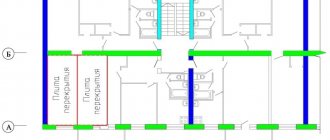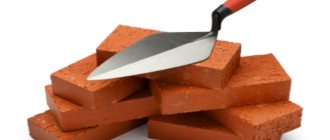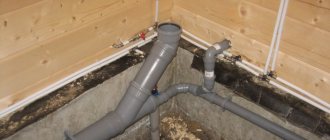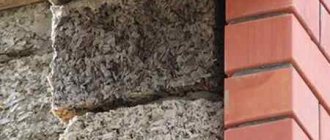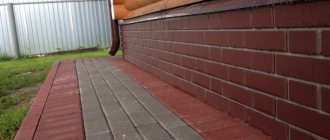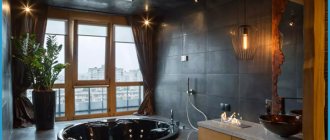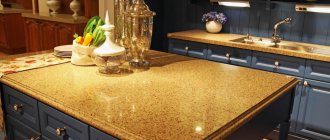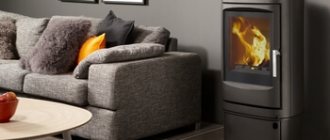In this article we will look at which materials for building a house are better for various purposes.
Today, many people dream of a big, beautiful and cozy home. But before you make a decision and start building a building, you need to think carefully about the purpose for which you plan to build the house. One format is suitable for seasonal construction, the second - for permanent residence. After planning, you should think about the material, because safety and convenience depend on quality material.
What is the best material to build a house for permanent residence (permanent residence) from?
A classic for country house building is brick, made from baked clay and has good wear resistance, strength, and durability. The material is considered environmentally friendly, is not afraid of high and low temperatures, and is resistant to any weather conditions. They are massive, but require insulation.
There are several times more positive aspects in such material than negative ones, so a brick house is considered the most successful option for permanent residence. Fire is not so scary for it, and it will last much longer than concrete and, especially, wood.
Are frame houses suitable for permanent residence?
Frame houses are difficult to classify as real estate for permanent residence. Today the technology has been improved in Europe, but is not yet fully adapted to the Russian climate and conditions. In addition, we still have very few specialists capable of accurately installing all structures without deviating from technology.
In any case, if you are planning to build a cottage for year-round use, the “framework” will have to be significantly insulated. Without this, such houses will definitely be cold in winter in most Russian regions.
The choice of good insulation, its width and proper installation is a broad topic that deserves a separate article.
What materials are suitable for a summer house in the country?
Traditionally, summer cottages are built from wood. Log buildings or houses made of laminated veneer lumber - any of these options will be successful for a comfortable summer. Such constructions are environmentally friendly and safe, the rooms are well ventilated, and also have a pleasant smell.
Wooden cottages, which can easily be built to order, are especially valued. Such a house needs treatment and maintenance, but its accessibility, reliability and comfort are important advantages when choosing a summer house for a summer residence.
No. 1. Wooden house
The most conservative and traditional material for building a house is wood. Its undeniable advantages include:
- naturalness and environmental friendliness;
- low thermal conductivity;
- optimal microclimate inside the house;
- the ability to equip a simple foundation (columnar is suitable);
- excellent appearance and no need for additional finishing.
Minuses:
- high fire hazard, even though special impregnations are used in the production of timber today;
- wood is sensitive to humidity and pests, they are also trying to combat this, but without constant care the material will be constantly damaged;
- shrinkage;
- high price.
A wooden house means buildings made of rounded logs, planed timber and profiled laminated timber. Due to differences in processing technology, the properties of houses built with these materials can differ greatly.
Rounded log
For the construction of houses, as a rule, logs from pine, fir and spruce . They undergo multi-stage processing, incl. amenable to high temperature drying. Such a house looks solid, like a real fortress, it is easy to breathe in it, but if you want to build a house from a log house, you should be prepared for the numerous features of the material.
The main problem is shrinkage , which lasts about a year and is about 10 cm for each floor. Shrinkage causes cracks to appear, which will need to be carefully sealed to prevent heat loss. In addition, in the first year it will not be possible to do any finishing or install windows. In terms of heat transfer resistance, wood, of course, outperforms brick, but a log house still cannot be called 100% energy efficient. There are several reasons, including cracks formed during shrinkage and insufficient wall thickness. It is impossible to build walls more than 20 cm thick from logs (the thickness is changed at the seams - the thinnest place), and for most regions this is not enough. You will either have to increase heating costs, or use the house only in the summer, because you can’t insulate wooden walls and hide the most beautiful natural material. In addition, the tree requires constant care.
Despite a lot of disadvantages, houses made of rounded logs continue to be actively erected, because they give special home comfort and, subject to normal care, can stand for quite a long time.
Glued laminated timber
Glued laminated timber, while maintaining all the advantages of natural wood, is devoid of its most obvious disadvantages. The material is usually made from coniferous trees, usually spruce, less often pine and larch. The finished product is obtained by longitudinally splicing individual lamellas from solid wood. The fibers of neighboring fragments are located in different directions. This production technology makes it possible to obtain durable material with pre-predicted properties . The profiled ends of such products facilitate the construction process and allow for durable masonry.
The main advantages of the material include high strength, absence of shrinkage and cracks. Such walls do not require finishing either inside or outside, but since the maximum thickness of the timber is 30 cm, it is not possible to build a completely energy-efficient house in every region. Glued laminated timber is more expensive than rounded logs.
What is better to build a house from in the Urals or in Siberia?
Such cold corners of Russia as Siberia or the Urals need warm houses. It is important to choose a material that will warm up quickly and not lose heat. Of course, in such regions the house will still have to be well insulated, but if initially the raw materials are already “warm”, the owner of the building will save on cladding. The ideal option would be to build it from concrete, namely with cells.
Initially, porous concrete was used for insulation, and a little later, entire houses began to be built from it, which were distinguished by excellent heat retention. In addition, it will take a little time to construct a fire-resistant building. After construction, for more insulation, the house should be plastered and covered with panels.
Criteria for choosing a brick: what to look for?
An important indicator of this material is its frost resistance, indicated by the letter code F and a number: from 15 to 100. The number series indicates the number of freezing/thawing cycles during which the material is not destroyed and there is no loss of its technical and operational qualities.
For the construction of load-bearing structures in residential buildings located in a temperate climate zone (with rare abnormal cold), it is optimal to use F15 grade brick; for colder regions, it is recommended to use a grade of at least F25 for the construction of walls.
What is suitable for warm corners of Russia (a house by the sea)?
A house by the sea is the dream of many romantics. Mostly, such buildings are constructed of stone . Increased coastal humidity will quickly destroy a wooden structure. Ceramic blocks are also suitable , which are also not afraid of water.
There is no need to build a house right on the beach, because it will take a lot of money to build a foundation for a house on the sand, very close to the coastline. It is better to start construction work at least 200 meters from the beach. In addition, thunderstorms are a common occurrence near the sea. A wise decision would be to acquire a lightning rod and eliminate a large number of metal structures in the building .
A reliable foundation is the main factor in the quality of the entire structure
It is very difficult to underestimate the role of the foundation in ensuring the reliability and durability of a residential building. This concrete, stone or metal structure, resting on the lower dense layers of soil, must reliably support the weight load of all building structures, furniture, decoration and engineering equipment.
An improperly built foundation can cause subsidence, which will lead to cracks in the walls, warping of doors and windows, and as a result, major repairs of the building may be required.
Therefore, the calculation of the foundation, as the most important structure, must be performed by a specialist, and its installation by professional workers.
What materials are cheaper to build a house from?
Nowadays, many people want to run away from the city and build their own house, but there may not be enough money for a massive structure. The current great financial difficulties do not leave room for great flights of fancy, so you have to choose from cheap materials, taking into account that the house must be reliable and safe.
The cheapest houses are made from concrete and wood . Aerated concrete is fireproof, does not rot, it needs a simple foundation, it is also warm and requires easy processing. But when laying the material, it is necessary to adhere to a certain technology. While wooden houses are easy to build without certain nuances, they are susceptible to rotting, catching fire, and the foundation must stand for about a year.
The choice between these two cheapest materials depends specifically on the future owner of the house.
